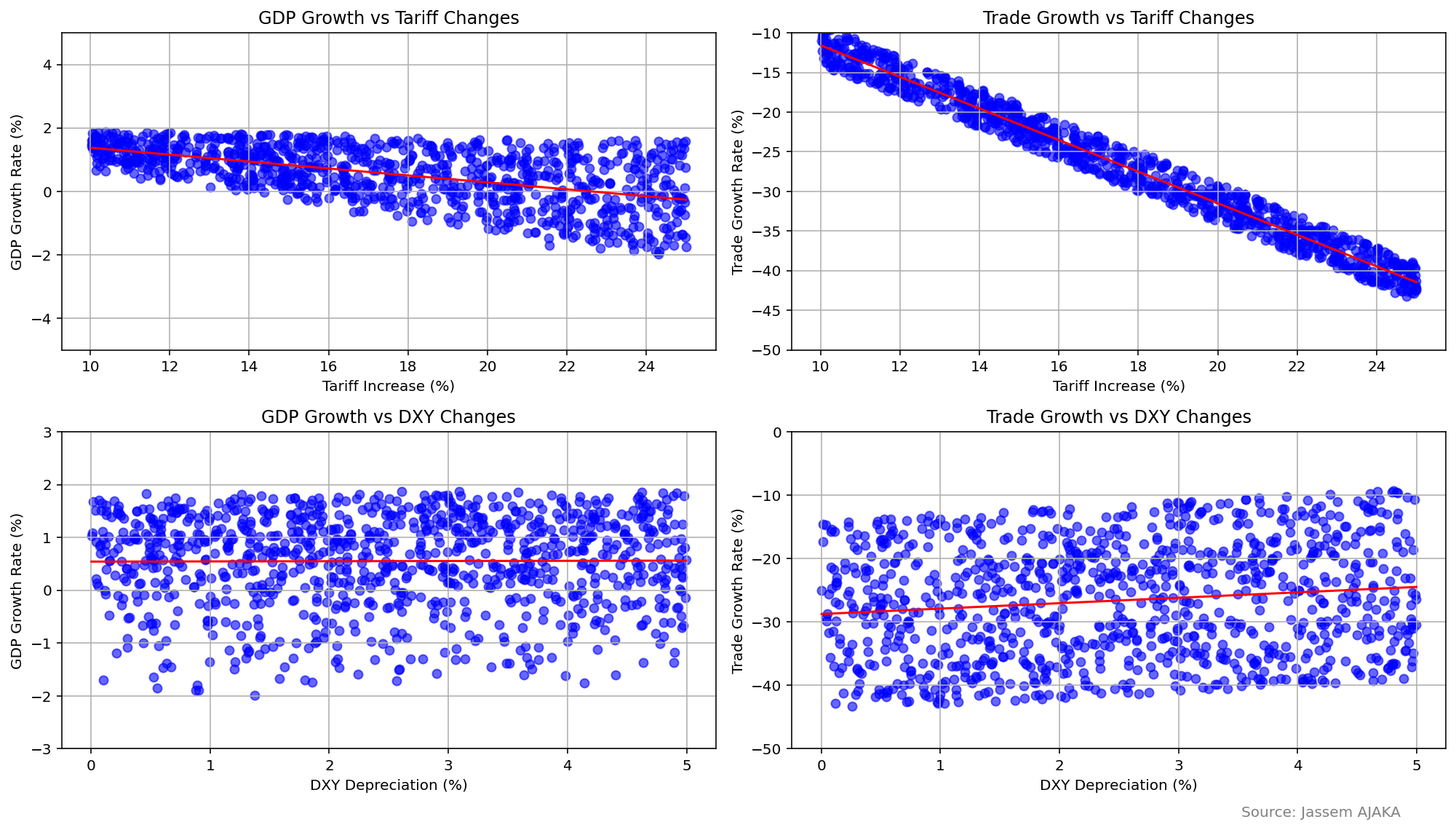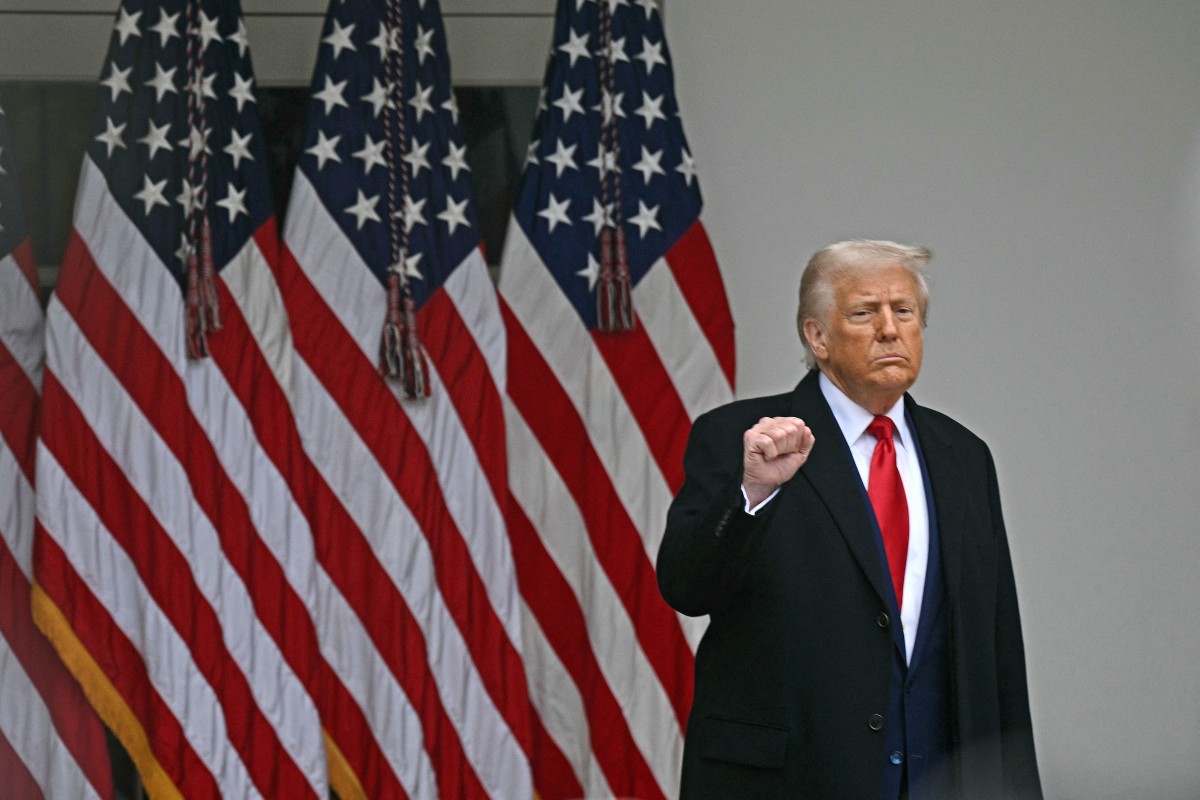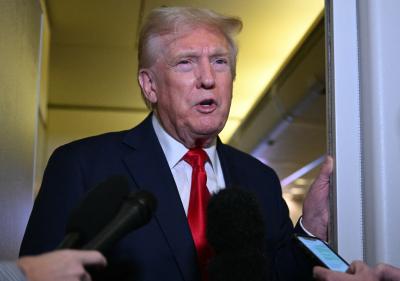President Donald Trump’s decision to raise tariffs wasn’t entirely unexpected—but the breadth of the move certainly was. While initial forecasts suggested the tariffs would target around twenty major U.S. trading partners, the final decision affected 180 countries. However, the U.S. left the door open for bilateral negotiations to reduce or lift the tariffs in specific cases.
Trump’s motives fall into two categories: one economic, aimed at protecting American industries, reducing the trade deficit, and pressuring countries to alter what Washington deems unfair practices; the other political, intended to extract concessions from certain nations. Trump defends his decision with the principle of reciprocity—pointing to significantly higher tariffs imposed on U.S. goods in some countries, while U.S. tariffs remain less than half those rates in return.
America First, Consumers Last?
The U.S. is a massive consumer-driven economy with a population of over 350 million people with considerable purchasing power. The scope of Trump’s tariffs touches a staggering number of foreign companies, but it also affects U.S. firms that rely heavily on imported raw materials. Any price increase on these imports is expected to ripple into domestic prices, fueling inflation both within the United States and abroad.
Key Measures and Their Reach
Since 2018, the U.S. has imposed tariffs on steel and aluminum imports from various allied countries. These moves prompted retaliatory tariffs from affected nations. The primary focus, however, remained China. The Trump administration slapped wide-ranging tariffs on Chinese goods, launching a full-blown trade war between the world’s two largest economies.
The latest wave of tariff hikes goes well beyond previous rounds, covering key sectors of international trade. Many of the new measures bypassed the World Trade Organization’s rules by invoking national security concerns. Notably, tariffs on some Chinese goods—like electric vehicles—reached 100%, justified by the U.S. administration as a response to “unfair practices, intellectual property theft, and the trade imbalance.”
While China has borne the brunt of these measures due to its trade volume with the U.S., the global reach of these tariffs is immense, impacting countless companies worldwide.
The Ripple Effect of Tariff Increases
Tariffs are, at their core, taxes on imports and are considered “sovereign taxes” under constitutional law. When a country raises tariffs, the cost of imported goods rises, leading to inflation for local businesses and consumers—a direct, first-level effect. But the most dangerous consequences are second-level (other countries) and third-level (global) repercussions. Trump’s team is reportedly preparing countermeasures to contain the domestic fallout.
The relationship between GDP, trade, and tariffs is grounded in several well-established economic theories:
Comparative Advantage (David Ricardo): Countries benefit by specializing in goods where they have a relative advantage and trading them. Tariffs distort this specialization, reduce trade volumes, and cut into overall gains.
Heckscher-Ohlin Model: Countries export goods that use their abundant resources and import goods that require scarcer ones. Trade balances factor prices and increases efficiency, boosting GDP. Tariffs disrupt this dynamic.
New Trade Theory (Paul Krugman): Trade thrives on economies of scale, product differentiation, and imperfect competition—leading to lower costs, innovation, and GDP growth. Tariffs restrict market access and undermine these benefits.
Infant Industry Argument: Temporary protection may help fledgling industries develop and become globally competitive, possibly increasing GDP in the long term. However, real-world evidence suggests protectionism often breeds inefficiency.
Trade Wars and Retaliation: Tariffs often spark countermeasures from other countries, leading to trade wars that damage global commerce and deter investment.
Trump’s Strategy: Crisis or Calculated Gamble?
If history and theory suggest tariffs reduce GDP growth, why is Trump pressing ahead? A closer look reveals five strategic reasons:
Twin Deficits: The U.S. economy is burdened by twin deficits—a $1.9 trillion federal budget deficit and a $1.13 trillion current account deficit. With public debt exceeding $36 trillion (compared to a $29 trillion GDP), Trump aims to reduce the budget deficit by establishing a Department of Government Efficiency and using tariffs to cut the trade deficit in goods.
Support for U.S. Industries: Trump sees tariffs as an opportunity to support domestic industries. Expected future policies include tax breaks for businesses, funded by reduced budget deficits. If implemented, this could spur U.S. GDP growth.
Interest Rates: Trump considers high interest rates a barrier to his strategy. He’s pushing the Federal Reserve to lower rates to facilitate corporate investment and reduce government borrowing costs. A standoff with the Fed may be on the horizon.
Bilateral Bargaining: Trump is leaving room for bilateral negotiations with targeted countries. This flexibility could lead to a wave of new trade deals, potentially easing U.S. trade deficits.
Currency Strategy: Trump’s advisors are pressuring for a weaker dollar to boost exports and offset foreign tariff hikes. If the Fed lowers rates, a currency war could erupt—further destabilizing the global economy.
Global Response: Trade and Currency Wars Loom
Trump’s measures have already triggered a backlash from allies and rivals alike. Many are preparing tariffs of their own on U.S. exports, setting the stage for a possible trade war. Given America’s weight—over a quarter of the global economy—it might weather such a conflict. But the greater risk lies in a currency war, which could spark a global economic collapse.
Intense bilateral negotiations are expected in the coming months, aiming to ease the blow from the tariff hikes.
Simulating the Tariff Impact
While there is no universal formula linking GDP growth, trade expansion, and tariffs, we can draw key conclusions:
Trade and GDP: Global trade growth tends to correlate positively with GDP growth, particularly in open economies. Since trade is a component of GDP in expenditure-based models, tariffs can dampen both.
Tariffs and Elasticity: The real impact of tariffs depends on how flexible import demand is. A weaker dollar, for instance, makes U.S. goods cheaper abroad—boosting exports and shrinking imports.
To better understand the combined effects of tariffs, GDP, trade flows, and currency devaluation, the following equation offers a simplified framework:
(Equation details omitted here for brevity; refer to full report for model.)
 Illustration 1: Simulation of the impact of Trump’s tariff increases on international trade and global GDP (Source: Our calculations)
Illustration 1: Simulation of the impact of Trump’s tariff increases on international trade and global GDP (Source: Our calculations)
Final Takeaway
As shown in Simulation Chart 1, the effects of Trump’s tariffs on global trade and GDP are real and inevitable. However, the precise magnitude of the damage is difficult to calculate due to the complex and interconnected nature of the global economy.
 French
French















